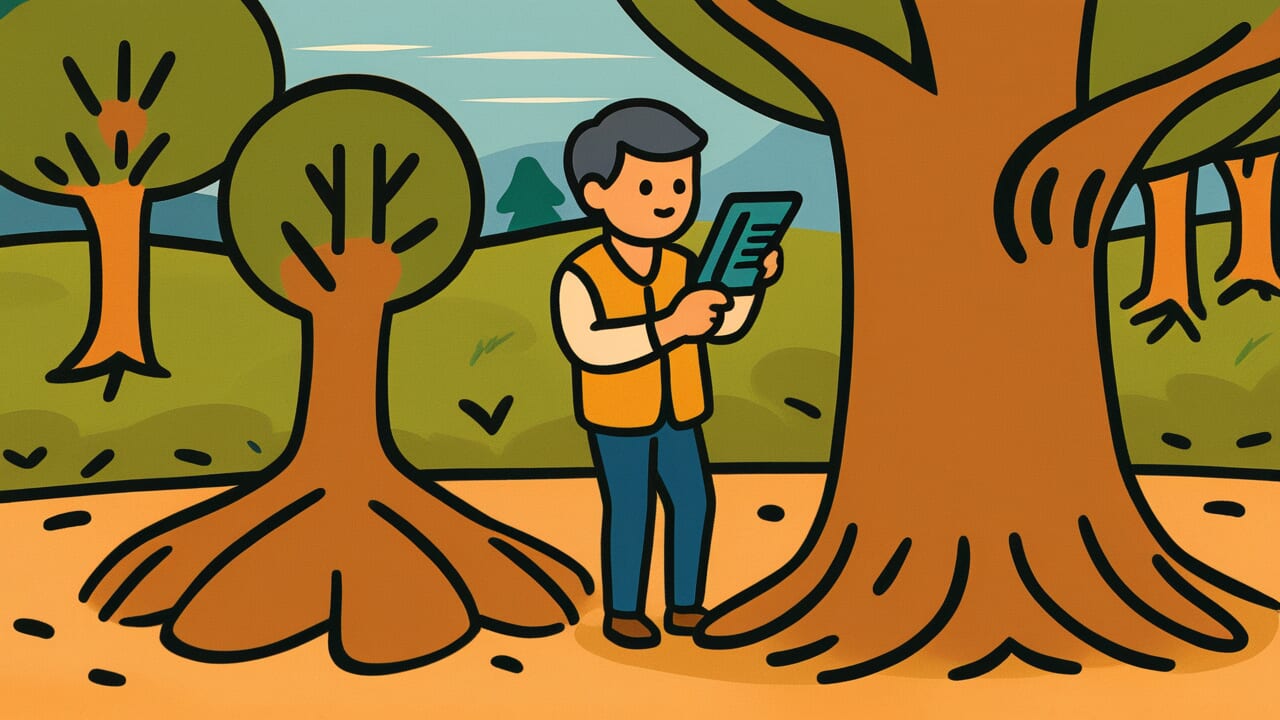How to Read “Those who seek a tree’s longevity must first strengthen its roots”
Ki no nagaki wo motomuru mono wa kanarazu sono konpon wo kataku su
Meaning of “Those who seek a tree’s longevity must first strengthen its roots”
This proverb teaches that long-term success requires building a solid foundation. For a tree to live for decades or even centuries and grow large, what matters most is not the visible parts above ground.
The key is how deep and wide the roots spread underground.
This expression applies to all areas of life. It’s used in learning, skill development, business growth, and building relationships. It’s especially helpful when someone rushes for quick results and neglects the basics.
The proverb reminds them what truly matters.
Modern society often values instant results and efficiency. But this saying reminds us of the value of taking time to build a foundation. Surface-level achievements may be temporary.
But what’s built on a solid base won’t shake even when facing difficulties.
Origin and Etymology
This proverb likely comes from the Chinese classic “Zhenguan Zhengyao.” This book records political discussions between Emperor Taizong of Tang and his ministers. It contains the passage: “Those who seek a tree’s longevity must first strengthen its roots, and those who desire a stream’s distance must first deepen its source.”
Emperor Taizong spoke these words about the fundamental principles of governing a nation. To build a long-lasting, prosperous country, you must first solidify the foundation of government.
For a tree to grow tall and live long, the visible trunk and branches aren’t enough. The roots spreading deep underground must be strong. If the roots are shallow, no matter how impressive the tree looks, a strong wind will knock it down.
This natural principle is applied to human endeavors.
The proverb came to Japan before the Edo period. It appeared in samurai educational texts and merchant guidelines. Rather than chasing immediate results, you should focus on the invisible parts.
This saying expresses a core idea of Eastern philosophy. It has taken deep root in the Japanese heart for centuries.
Usage Examples
- If you’re starting a new business, remember that those who seek a tree’s longevity must first strengthen its roots. First establish solid human resource development and financial planning.
- Language learning also follows the principle that those who seek a tree’s longevity must first strengthen its roots. You won’t improve if you skip grammar and basic vocabulary to practice only conversation.
Universal Wisdom
Humans have an instinctive desire to quickly obtain visible results. When effort doesn’t show immediate results, we feel anxious. We want to find shortcuts.
But this proverb has been passed down for hundreds of years because humanity has repeatedly made the same mistakes.
The temptation to neglect the foundation and decorate only the surface has existed in every era. Something may look impressive at first glance, but it crumbles with the slightest difficulty.
Countless ancestors have experienced such failures. That’s why the wisdom to focus on the invisible parts crystallized into this proverb.
What’s interesting is that this saying doesn’t just say “strengthen the roots.” It expresses the act of strengthening as an ongoing process. This requires time and continuous effort.
It’s not something you do once and finish. It’s achieved only through daily accumulation.
Everyone wishes to grow large and reach high. But at the same time, we know how difficult it is to continue steady effort.
This proverb looks at both sides. It quietly teaches us what truly matters.
When AI Hears This
Tree roots don’t spread evenly underground. Actually, nutrients and water flow concentrate in a few thick main roots. Smaller roots branch out from there. This structure has what network theory calls “scale-free” characteristics.
In other words, a small number of important nodes dominate the whole system.
What’s interesting is that this structure doesn’t form by chance. It emerges through a law called “preferential attachment.” When tree roots grow, they concentrate more nutrients into roots that are already thick and carrying nutrients.
Strong roots become even stronger. The same principle operates when popular websites attract more links on the internet, when talented people in companies get more work, and when frequently used neural pathways in the brain grow thicker.
From this perspective, strengthening the roots means “reinforcing the central hub.” What’s fascinating is that if the hub is strong, the whole system functions efficiently. But if the hub is weak, adding more endpoints won’t prevent collapse.
Research shows that in many cases, the top 20 percent of nodes carry 80 percent of the system’s function. What the tree teaches is a universal law: growth systems always have a “center that deserves concentrated investment.” Identifying and strengthening that center is the key to sustainable development.
Lessons for Today
We live in a society that demands speed and efficiency. Sometimes we feel that if results don’t come quickly, there’s no value. But this proverb teaches us that truly valuable things are built over time.
If you’re learning something now, resist the urge to skip basics and jump to advanced topics. If you’re starting something new, spend time on the foundation that nobody sees rather than the flashy parts.
It might feel boring. But that time becomes the power that supports your future.
What matters is having the courage to continue invisible effort. Even if others seem to be advancing ahead of you, there’s no need to rush. If you’re deepening your roots now, you’ll eventually grow higher and longer than anyone else.
People who value the foundation are never betrayed.



Comments